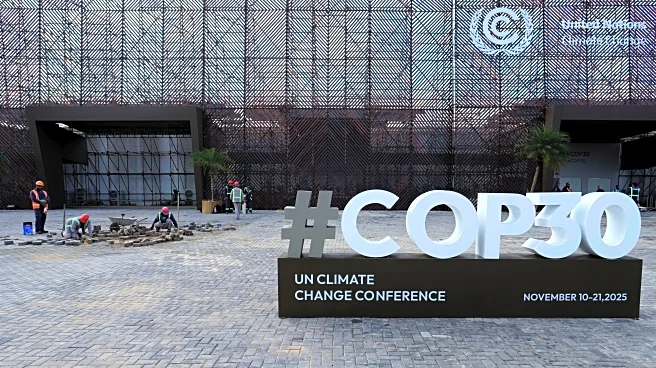What's Happening?
A recent study published in the journal Nature has highlighted that Delhi is experiencing the fastest rate of land subsidence among Indian megacities, with a maximum rate of 51 millimeters per year. This
phenomenon is primarily driven by excessive groundwater extraction, which is causing the ground to sink. The study, which utilized satellite radar observations from 2015 to 2023, identified that 196 square kilometers of Delhi are affected, making it the third largest area impacted after Mumbai and Kolkata. Significant subsidence hotspots have been identified in areas such as Bijwasan, Faridabad, and Ghaziabad. The study also noted a localized area of uplift near Dwarka. The relentless over-extraction of groundwater, combined with climate change and extreme weather, poses a significant risk to urban infrastructure, with thousands of buildings at high risk of structural damage.
Why It's Important?
The findings of this study are crucial as they underscore the severe risk posed to urban infrastructure in Delhi due to land subsidence. With 2,264 buildings currently at high risk, projections indicate this number could rise to 11,457 within 50 years if current trends continue. The uneven sinking of land, known as differential land subsidence, can weaken building foundations and damage critical utility lines, posing a formidable challenge for policymakers. The study highlights the urgent need for large-scale assessment and preventive action to mitigate the risks associated with land subsidence, which is exacerbated by shifts in monsoon patterns and climate change. As India is the world's largest user of groundwater, the implications of this study extend beyond Delhi, affecting urban planning and sustainability efforts across the country.
What's Next?
The study calls for immediate action to address the issue of groundwater depletion and its impact on land subsidence. Policymakers are urged to implement strategies for sustainable water management and urban planning to prevent further damage to infrastructure. This may involve regulating groundwater extraction, enhancing rainwater harvesting, and improving water conservation practices. Additionally, there is a need for comprehensive monitoring systems to assess the extent of subsidence and its impact on urban areas. The study's findings could prompt a reevaluation of current policies and lead to the development of new frameworks to address the challenges posed by land subsidence in Indian megacities.
Beyond the Headlines
The study's revelations about Delhi's land subsidence bring to light broader issues related to urban sustainability and resilience. The compounding effects of climate change, extreme weather, and unsustainable resource extraction highlight the interconnectedness of environmental and urban challenges. This situation underscores the need for integrated approaches to urban planning that consider environmental, social, and economic factors. The study also raises ethical questions about the responsibility of governments and industries in managing natural resources and protecting vulnerable populations from the impacts of environmental degradation.













